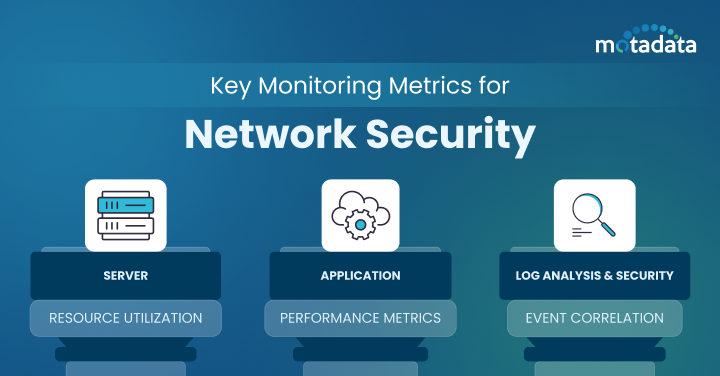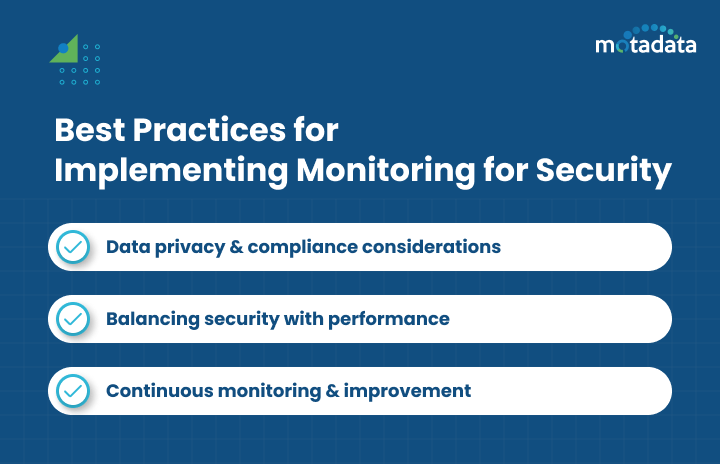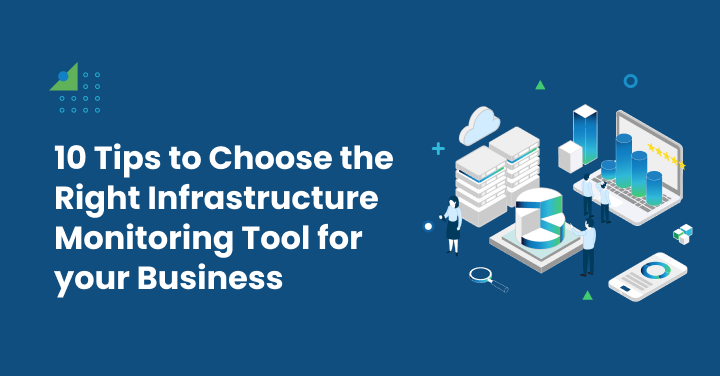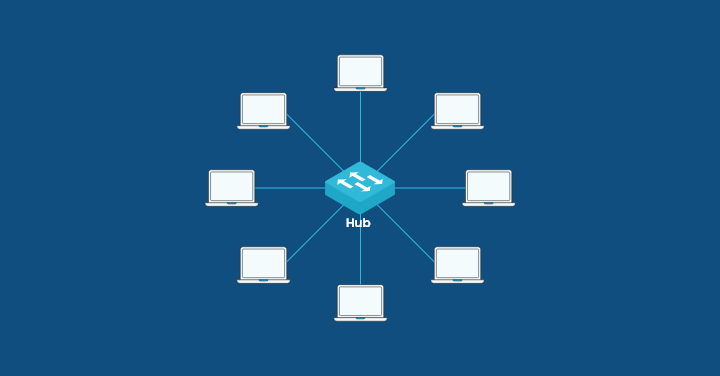Introduction
Keeping information safe is very important in the new age business world, as well as keeping a keen eye on performance monitoring. Network security helps protect this information and keeps businesses running smoothly by providing actionable insights for the entire infrastructure and curtailing data leakage.
Monitoring infrastructure has become an essential part of a strong security plan as along with data security, it plays a crucial part in enhancing the overall infrastructure performance. It gives organizations a clear view and control to find and fix threats quickly. By using a complete monitoring solution, businesses can spot problems early, act soon on security issues, and improve their safety.
Understanding the Link Between Infrastructure and Security
IT infrastructure includes many parts, from physical servers to cloud infrastructure. It is essential for modern businesses. As companies depend more on these systems, keeping them safe is very important. Security risks are now different from old defenses. This change calls for a complete approach that adds security throughout the IT infrastructure.
In this context, infrastructure monitoring becomes essential. Companies get valuable insights by constantly checking IT assets’ health, availability, and performance. Any change from what is normal could mean a security problem, a system issue, or a setup error that bad actors might use.
Key Monitoring Metrics for Network Security
Adequate network security depends on keeping an eye on important metrics. These metrics give information about how IT systems are doing. They act like vital signs for the system. They can alert administrators about possible security breaches or unusual activities that need quick action.
When organizations track and analyze these metrics, they can better understand their network’s security and enhance the process. This helps them take innovative steps to reduce risks.
Server resource utilization
Monitoring how much server resources are being used is essential. This includes checking CPU usage, memory use, and disk space. When CPU usage is high, it can slow down servers and make them easier attack targets.
If the CPU is heavily used for a long time, it might mean that harmful software is running in the background. This software can use too many system resources. Also, keeping an eye on disk space is crucial. It helps ensure there is enough storage. This prevents the server from slowing down and stops possible data loss.
Application performance metrics
Applications often get attacked by cybercriminals. This makes it necessary to watch their performance for any signs of problems that could mean a security issue. Quick error rate increases, slow responses, or strange behavior can show possible attacks.
By keeping an eye on how applications perform, companies can find and fix problems early. This helps avoid big outages and keeps the user experience smooth.
Here are essential application performance metrics to watch:
- Application response time: If response times are slow, it might mean a denial-of-service attack or other issues causing lag.
- Error rates: A significant rise might indicate a security breach or setup problems.
- Transaction volumes: Watching transaction numbers helps spot unusual activities, like many login attempts that could mean brute-force attacks.
Log analysis and security event correlation
Log management is vital for monitoring the network security of a system. Logs give detailed information about what happens in the system. This includes user actions, how applications behave, and any security events. When security teams analyze logs, they can find strange patterns, follow the path of attacks, and gain valuable insights into security problems.
Security Event Correlation, known as SIEM, takes this a step further. SIEM connects events from different sources. This helps to spot complex attacks that might not be seen otherwise. SIEM systems give a clear view of security events. This allows security analysts to find, look into, and respond to threats more efficiently.
Early Detection of Threats
Early detection of threats is essential for reducing the impact of security issues, apart from better performance optimization. Infrastructure monitoring tools are necessary for this goal as they sync with the infrastructure metrics. They help organizations find possible threats before they turn into significant attacks.
By watching key metrics and system behavior all the time, these tools send alerts quickly. This helps security teams respond to and lessen threats more effectively, enhancing peak performance and operational efficiency.
Anomaly detection and behavior analysis
Anomaly detection and behavior analysis are key parts of spotting threats early. By setting norms for regular system and user behavior, infrastructure monitoring tools can catch unusual activities that may suggest harmful actions. Machine learning helps a lot in this job. It seems to have vast data to find small patterns and anomalies that old rule-based systems might overlook.
Anomaly detection can find strange network traffic, unauthorized access, or unexpected system changes. Behavior analysis is about noting changes from the usual behavior of users and entities. For example, if one user suddenly starts accessing many files, it might mean their account is hacked, or there is an insider issue.
Identifying suspicious network traffic patterns
Identifying strange patterns in network traffic is essential for keeping networks safe. Tools for monitoring infrastructure give real-time views of network activity. This helps administrators notice and look into issues that stand out from regular traffic. It includes watching for odd port activity, sudden jumps in data transfer, or links to known bad IP addresses.
Network management tools that have security features can find and mark unusual traffic. They follow the rules set in advance or use machine learning. These tools can instantly send alerts and block harmful traffic, stopping attacks from reaching critical systems or data.
Real-time threat intelligence integration
Integrating real-time threat intelligence into infrastructure monitoring improves how well threats are detected. Using threat intelligence feeds, organizations get the latest information on new threats, weaknesses, and harmful actors. This integration helps observability platforms match internal system data with outside threat data.
This matching gives essential context for security events. It helps security teams focus on alerts that matter, spot false alarms, and deal with real threats. For example, if there is an alert about a suspicious IP address, it becomes more evident if real-time threat intelligence shows that the IP is linked to known lousy activity.
Proactive Security Measures
Infrastructure monitoring is not just about reacting to security incidents. It also helps organizations take steps to prevent them. Regularly checking system data allows admins to find weak spots before anyone can use them.
This thinking helps businesses improve their security and create more muscular systems. These systems are more ready to handle attacks.
Vulnerability assessment and management
Regular vulnerability checks are essential for finding weak spots in IT systems and applications. Tools that monitor infrastructure and include vulnerability scanning can make this easier. They scan systems and networks to find known vulnerabilities.
These tools create reports that show the vulnerabilities found, how severe they are, and steps to fix them. Combining vulnerability assessments with monitoring data gives you a clear picture of security risks. This helps organizations decide which vulnerabilities to patch based on how serious they are and how critical the affected systems are.
Patch management and configuration compliance
Ensuring that all parts of the IT system follow the proper setup rules is crucial for keeping security strong. Tools that help watch the infrastructure and manage setups let managers create and implement security rules. This way, all systems and programs follow the best practices in the industry and comply with regulations.
These tools monitor system setups for any changes against the set security standards. They can send alerts if there are unauthorized changes. Monitoring for setup compliance helps stop security problems that come from incorrect setups.
Security information and event management (SIEM)
Security Information and Event Management (SIEM) is essential for monitoring systems. It gives real-time analysis of security alerts from network applications and hardware.
SIEM solutions show possible security risks, helping respond quickly to threats. By combining security data from different sources, SIEM improves the detection of unusual activity and supports quick action when incidents occur. SIEM platforms assist organizations in meeting security rules and make security operations easier for better network safety.
Incident Response and Recovery
In case of a security incident, quick responses and recovery are critical. They help limit damage and downtime. Infrastructure monitoring tools are key to achieving this. These tools help organizations find the source of problems fast and take the right actions to fix them.
By giving a clear view of system and network activity, these tools help incident response teams understand how big the incident is. They can also isolate affected systems and control the threat.
Rapid incident detection and notification
Rapid incident detection is the first step to a good response. Infrastructure monitoring tools act like an early warning system. They help identify and alert security teams about possible security issues as they happen.
These tools keep an eye on key metrics and how systems behave. They can find odd patterns that might mean an attack is in progress, like strange network activity, unapproved system access, or unusual file changes.
Once we detect an issue, quick notification is key to a timely response. Modern observability tools let us set custom alert rules and connect with different communication channels. This way, security staff can be told right away about possible threats.
Automated response actions
Automating how we respond to incidents is very important for recovery. It helps organizations react quickly to security problems. We can set up infrastructure monitoring tools to start automated actions based on set rules or threat information.
When we automate everyday security tasks, incident response teams can work on more complicated parts of investigations. This includes finding the leading cause of the incident, doing detailed exams, and improving long-term security. We can also improve performance with automated response actions.
Root cause analysis and remediation
After a security incident, it is essential to find out what caused it. This helps stop similar problems from happening again. Infrastructure monitoring tools give valuable data for root cause analysis. This allows security teams to find where the incident started, how it happened, and which systems or applications were affected.
By looking at past data, such as logs, network traffic patterns, and system setups, organizations can follow the steps that led to the incident. They can also spot any security gaps that should be fixed.
Best Practices for Implementing Monitoring for Security
Implementing infrastructure monitoring for security needs careful planning. Following best practices is essential to make it effective and valuable. When organizations use set guidelines, they can build a strong monitoring system. This system helps protect their IT systems and data effectively.
1. Data privacy and compliance considerations
When setting up infrastructure monitoring for security, it’s essential to consider data privacy and compliance. Organizations manage sensitive user information, financial details, and other private data. Therefore, it’s vital to make sure that monitoring practices follow the proper data privacy rules and industry standards.
Following regulations like the General Data Protection Regulation (GDPR) means organizations must take the correct steps to protect personal data. This involves getting explicit permission for data collection, ensuring it is safe when stored or sent, and allowing people to access, change, or delete their data.
2. Balancing security with performance
Striking a balance between security and performance is key when you set up infrastructure monitoring. Good monitoring helps you find and react to threats. However, too much tracking can slow down your systems and waste resources.
Capacity planning is essential. It helps ensure that the monitoring system can handle the data volume without hurting the performance of important systems. Service providers usually offer scalable monitoring solutions. These solutions can change with your needs.
3. Continuous monitoring and improvement
Infrastructure monitoring is not just a one-time task but an ongoing process. Security threats keep changing, so organizations need to adjust their monitoring plans to stay current. It is essential to regularly check and update the monitoring platform to keep it practical.
Regular security audits, checking alert limits, and adding new threat information are key steps in improving. Also, organizations should ask security teams and system administrators for feedback. This helps find gaps or areas that need to be improved in the monitoring platform.
Conclusion
Using strong infrastructure monitoring tools can significantly improve network security. They help find threats early, keep security measures proactive, and improve how quickly we respond to incidents. Companies can stay updated on possible threats and weaknesses by watching important metrics like network performance, server use, and application performance. Following best practices, like constant monitoring and teamwork between IT and security teams, is essential to keep the network safe and strong. Real-world examples and stories highlight why investing in complete infrastructure monitoring solutions is necessary. This helps to protect against new cyber threats and keep the business running smoothly.
FAQs:
Infrastructure monitoring is essential for network security. It gives us the tools and information to take innovative security steps. By keeping an eye on how systems are working, infrastructure monitoring helps us find threats. It also allows us to put strong security rules into action.
Key metrics include performance metrics such as network traffic, resource use, and error rates. They also include security metrics like unauthorized access attempts and security event logs. A strong monitoring solution has features for network monitoring and responding to incidents.
Infrastructure monitoring helps to meet rules by making data collection and analysis easier. This system keeps track of security events, user activity, and system settings. It supports infrastructure management in proving that it follows the rules.









